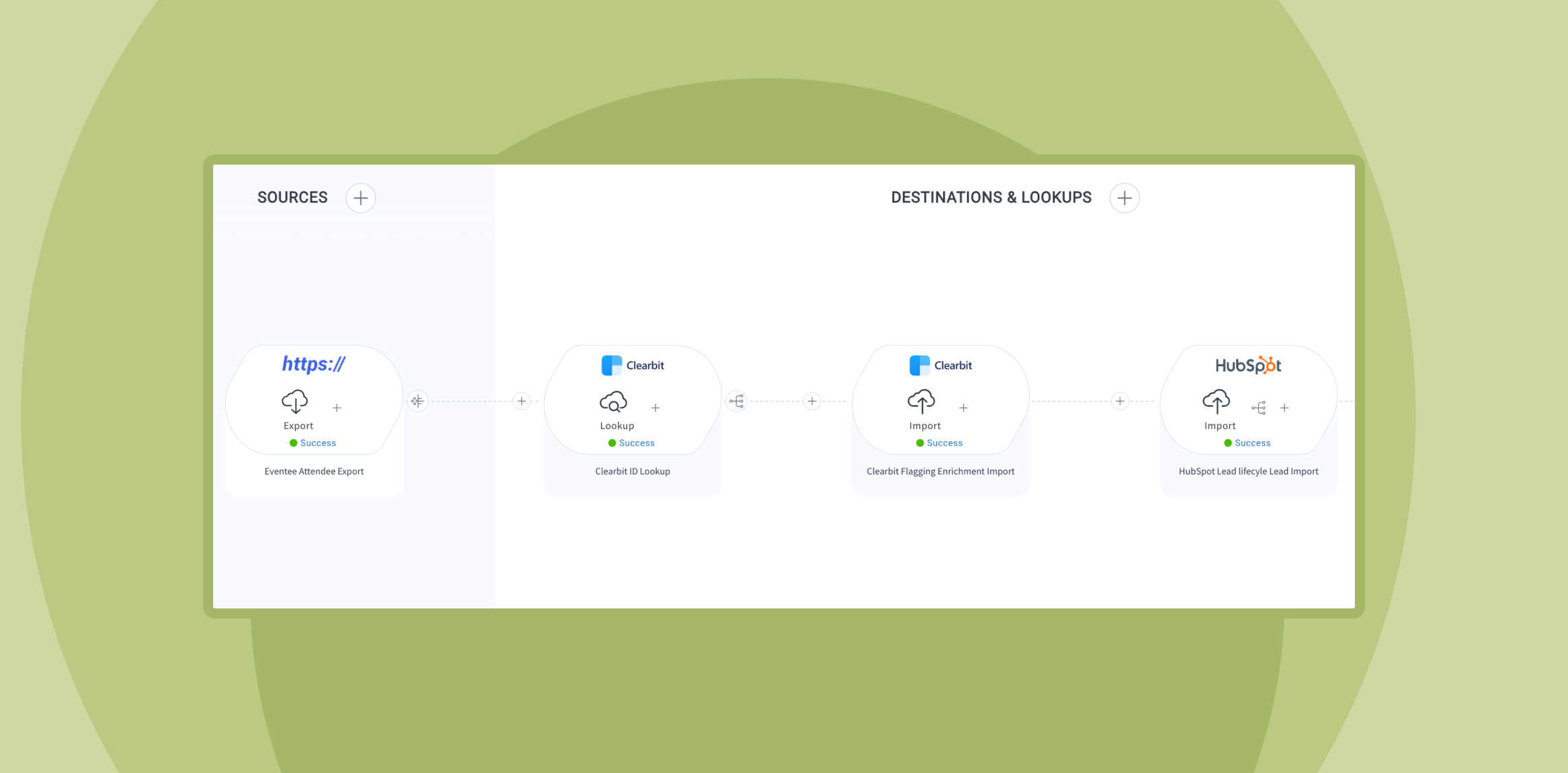Published Aug 9, 2024
Mastering the lead lifecycle

The lead lifecycle is a crucial concept in sales and marketing, representing the journey a user takes from their first interaction with a business to becoming a loyal customer. Effective management of the lead lifecycle can significantly enhance a company’s ability to convert leads into customers, streamline marketing efforts, and improve collaboration between sales and marketing teams.
Let’s dive deeper into what the lead lifecycle entails, examine each stage, and discuss the benefits of managing it effectively. We will also explore practical steps and tools to optimize your lead lifecycle management, ensuring your business can turn potential customers into loyal advocates.
What is the lead lifecycle?
The lead lifecycle refers to the stages a lead goes through, from initial contact to becoming a customer. It is an integral part of the sales and marketing strategy, helping organizations identify where leads are in their journey and tailor their approach accordingly. The lead lifecycle includes various stages, such as subscriber, lead, marketing qualified lead (MQL), sales qualified lead (SQL), opportunity, and customer. Each stage represents a different level of engagement and readiness to purchase.
Understanding the lead lifecycle is essential for creating effective marketing strategies and ensuring that sales teams are working with the most promising prospects. By mapping out the lead lifecycle, businesses can develop targeted campaigns and personalized communication that resonate with leads at each stage of their journey.
Key stages of the lead lifecycle
Subscriber
A subscriber is an individual who has shown initial interest in a company’s products or services, usually by subscribing to a newsletter or downloading a resource. They are at the top of the funnel, and the goal is to nurture them with valuable content to move them further down the lifecycle.
Characteristics of a subscriber:
- Initial interest: Subscribers have taken a small but significant step by showing interest in your content or offerings. This could be through signing up for a newsletter, downloading an ebook, or registering for a webinar.
- Basic engagement: They may visit your website occasionally and engage with your content lightly.
- Data collection: At this stage, you gather basic information about the subscriber, such as their name, email address, and possibly some demographic data.
Lead
A lead is someone who has engaged with the company beyond the initial subscription. This could be through actions like attending a webinar, filling out a form, or interacting with content multiple times. The transition from subscriber to lead indicates a growing interest in the company’s offerings.
Actions that move a contact from subscriber to lead:
- Increased engagement: The lead begins to interact more frequently with your content, such as reading blog posts, watching videos, or attending online events.
- Form submissions: Leads often fill out forms to access gated content, providing more detailed information about themselves.
- Behavioral indicators: Tracking behaviors such as multiple website visits, downloading multiple resources, and engaging with emails can signal a transition from subscriber to lead.
Marketing qualified lead (MQL)
An MQL is a lead that has been assessed by the marketing team and deemed more likely to become a customer compared to other leads. Criteria for MQLs typically include specific actions taken, such as visiting certain pages on the website, downloading multiple resources, or meeting demographic criteria.
Criteria for identifying MQLs:
- Engagement evaluation: Many companies evaluate lead engagement. Activities such as multiple website visits, email opens, and content downloads increase a lead’s score and make it more likely to become an MQL.
- Fit and interest: MQLs not only show high engagement, but also fit the profile of your ideal customer. This could include factors like job title, company size, or industry.
- Intent signals: Actions that demonstrate intent, such as requesting a demo or pricing information, are strong indicators that a lead is ready to move to the next stage.
Sales qualified lead (SQL)
An SQL is an MQL that has been handed over to the sales team. This transition happens when the lead shows clear intent to purchase, such as requesting a demo or engaging in detailed discussions about the product. The sales team then focuses on converting these leads into opportunities.
Transition from MQL to SQL:
- Sales engagement: The lead engages with sales activities, such as scheduling a call or meeting, which indicates a readiness to explore purchasing options.
- Needs assessment: Sales teams conduct initial assessments to understand the lead’s needs and how your product or service can meet them.
- Qualification: This involves confirming that the lead has the budget, authority, need, and timeline to make a purchase decision.
Opportunity
An opportunity is a lead that has a high probability of becoming a customer. This stage involves deeper sales interactions, including proposals, negotiations, and addressing any concerns the lead might have. Opportunities are closely monitored and managed by the sales team to maximize the chances of closing the deal.
What defines an opportunity:
- Proposal stage: The lead has received a proposal or quote and is actively considering your solution.
- Negotiation: Discussions around terms, pricing, and implementation are ongoing.
- Decision-making: The lead is in the final stages of the decision-making process, and sales teams work to address any last-minute concerns and secure the commitment.
Customer
The final stage is when an opportunity converts into a paying customer. However, the relationship doesn’t end here. Ongoing relationship management is crucial to ensure customer satisfaction, foster loyalty, and encourage repeat business and referrals.
Final conversion and ongoing relationship management:
- Onboarding: A smooth onboarding process is critical to ensure the customer can effectively use your product or service.
- Customer success: Dedicated teams or account managers may work with the customer to ensure they achieve their goals and receive maximum value.
- Retention and upsell: Maintaining regular communication, providing excellent support, and identifying opportunities for upselling or cross-selling are essential for long-term success.
Why the lead lifecycle matters
Planning marketing efforts
By understanding where leads are in the lifecycle, marketing teams can plan targeted campaigns that address the specific needs and interests of leads at each stage. This ensures that marketing efforts are relevant and effective, ultimately increasing engagement and conversion rates.
Content strategy
Different stages require different types of content. For example, educational content for subscribers, case studies for MQLs, and product demos for SQLs. Tailoring content to each stage of the lead lifecycle helps in nurturing leads and moving them smoothly through the funnel.
Facilitating handoffs
A well-managed lead lifecycle ensures smooth transitions between marketing and sales teams, minimizing the risk of leads falling through the cracks. Clear criteria and processes for each stage help in seamless handoffs, ensuring that leads receive the right attention at the right time.
Enhanced lead scoring
Effective lead lifecycle management involves scoring leads based on their behaviors and characteristics. This scoring helps in prioritizing leads, ensuring that the most promising ones receive immediate attention. It also provides insights into the effectiveness of marketing campaigns and helps in refining strategies.
Improved sales efficiency
When leads are properly qualified and nurtured, the sales team can focus their efforts on leads that are more likely to convert. This improves sales efficiency, reduces the sales cycle, and increases the chances of closing deals.
Better ROI
Investing in lead lifecycle management yields a higher return on investment (ROI) by optimizing marketing and sales efforts. Targeted campaigns, efficient handoffs, and focused sales efforts ensure that resources are used effectively, leading to higher conversion rates and increased revenue.
How to manage the lead lifecycle effectively
Step-by-step overview of managing the lead lifecycle
- Define criteria for each stage
Clearly outline what actions or characteristics qualify a lead for each stage. This helps in consistent lead scoring and ensures all teams are on the same page. For example, define specific actions that move a lead from subscriber to MQL or from SQL to opportunity. - Use CRM systems
Customer Relationship Management (CRM) systems like Salesforce or HubSpot can track leads throughout their lifecycle, providing valuable insights and automation capabilities. These systems help in managing interactions, scoring leads, and automating tasks, making the lead lifecycle management more efficient. - Implement marketing automation
Marketing automation can help nurture campaigns, ensuring leads receive the right content at the right time. Marketing automation helps in maintaining consistent communication with leads, scoring their interactions, and moving them through the lifecycle based on predefined criteria. - Integrate iPaaS solutions
With all the different systems that are required to properly move users through the lead lifecycle, it can become overwhelming passing information to the applications and teams than need it. Integration Platform as a Service (iPaaS) solutions like Celigo can streamline data flow between different systems, ensuring seamless lead management and providing a unified view of lead interactions. iPaaS solutions help in integrating CRM, marketing automation, and other tools, ensuring that data is synchronized and workflows are streamlined.
How iPaaS can be used as a tool for effective lead lifecycle management
iPaaS (Integration Platform as a Service) solutions play a crucial role in lead lifecycle management by integrating different tools and systems, ensuring seamless data flow, and automating workflows. Here are some ways iPaaS can enhance lead lifecycle management:
- Data integration: iPaaS solutions integrate CRM, marketing automation, and other systems, ensuring that data is consistent and up-to-date across all platforms.
- Automated workflows: By automating workflows, iPaaS solutions help in moving leads through the lifecycle efficiently. For example, when a lead reaches a certain score in the marketing automation platform, iPaaS can trigger a workflow to update the CRM and notify the sales team.
- Unified view: iPaaS solutions provide a unified view of lead interactions across different systems, helping in better decision-making and personalized communication.
- Scalability: As businesses grow, iPaaS solutions can scale to accommodate increasing data volume and complexity, ensuring that lead lifecycle management remains efficient.
Example of iPaaS in action
Imagine a company using Salesforce for CRM, HubSpot for marketing automation, and Zendesk for customer support. An iPaaS solution like Celigo can integrate these systems, ensuring that lead data is synchronized across all platforms. When a lead engages with a marketing campaign in HubSpot, their interaction is automatically updated in Salesforce. If the lead reaches a certain score, a workflow is triggered to notify the sales team in Salesforce, and their details are updated in Zendesk to ensure seamless customer support once they convert.
Conclusion
Understanding and effectively managing the lead lifecycle is pivotal for maximizing conversions and fostering strong customer relationships. By clearly defining each stage, utilizing advanced tools, and ensuring seamless handoffs between teams, businesses can optimize their sales and marketing efforts. Investing in the right tools and platforms, such as CRM systems, marketing automation, and iPaaS solutions, can significantly enhance lead lifecycle management and drive better results. Try Celigo free to experience how our iPaaS solution can enhance your lead lifecycle management and drive better results. Whether you are looking to integrate multiple systems, automate workflows, or gain a unified view of lead interactions, Celigo offers the tools and features to streamline your processes and boost your business success.




